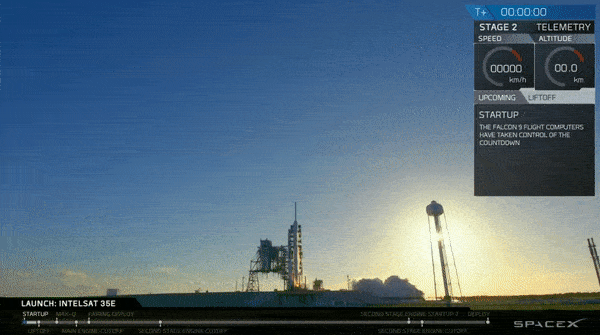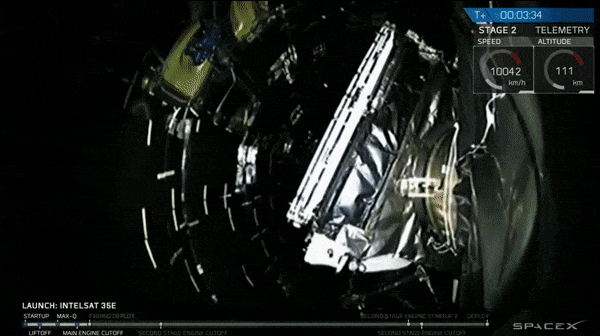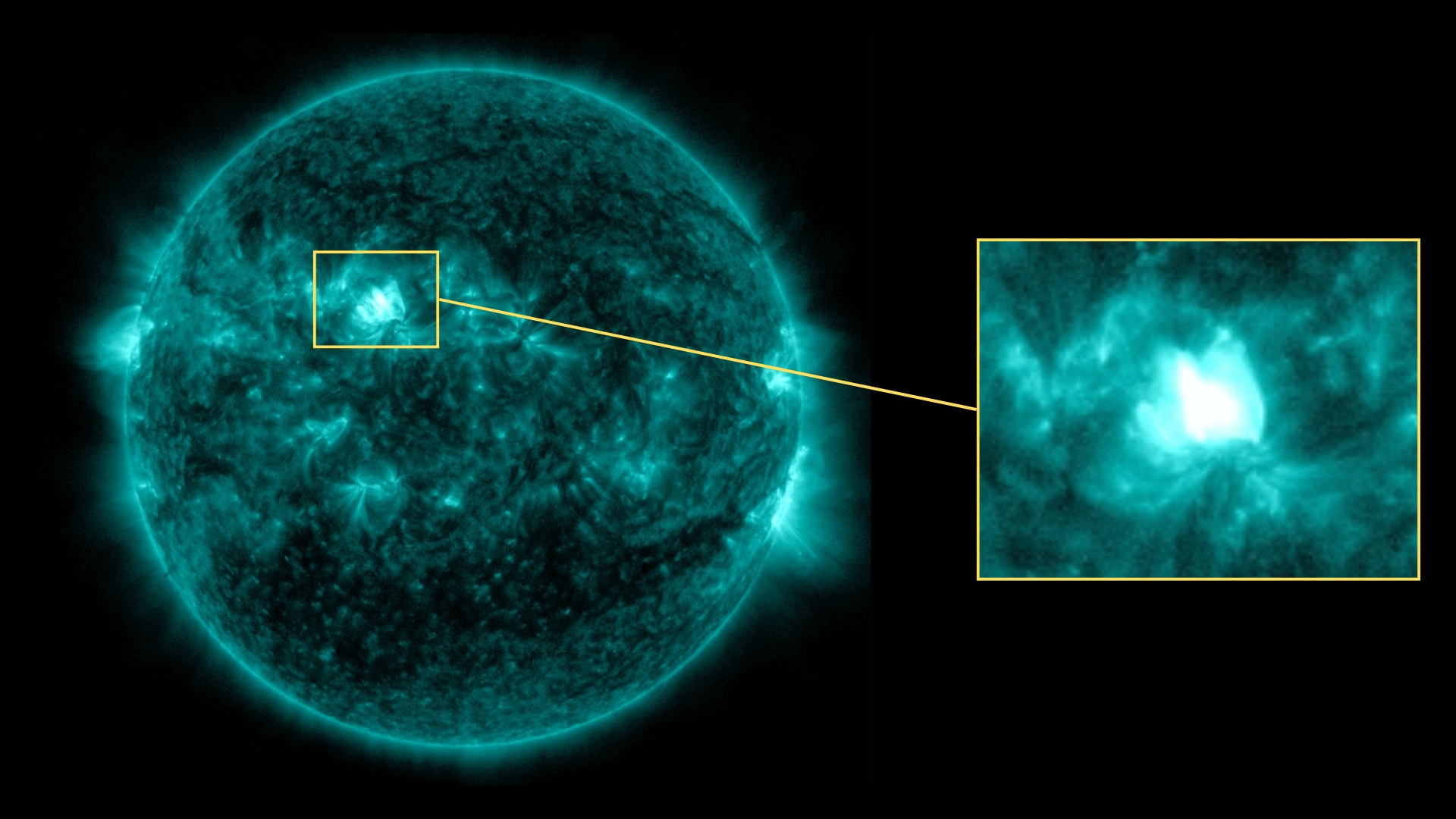Three Launches in 12 Days! SpaceX Lofts Heavy Communications Satellite
For the third time in 12 days, a SpaceX Falcon 9 rocket successfully took off from Earth and sent a satellite payload into orbit.
The rocket launched from the historic Launch Complex 39A at NASA's Kennedy Space Center in Florida at 7:38 p.m. EDT (2338 GMT) today (July 5). The Falcon 9 sent the Intelsat 35e satellite to a high-up geostationary transfer orbit; the craft will eventually make its way to geostationary orbit, about 22,300 miles (35,800 kilometers) above Earth.
SpaceX did not attempt to land the reusable Falcon 9 first-stage booster, because the heavy payload (Intelsat 35e weighs about 13,000 lbs., or 6,000 kilograms) and high orbit required more fuel than a typical launch; as a result, the booster did not have enough fuel to make a return landing. [SpaceX Launches Super-Heavy Intelsat 35e Satellite (Photos)]

The Intelsat 35e satellite will provide commercial broadband communications services in the Caribbean, as well as services for "government applications in the Caribbean, trans-Europe to Africa and the African continent," according to a statement from SpaceX. The Intelsat 35e is part of the Intelsat EpicNG series of "next-generation, high-throughput satellites," according to the statement.
SpaceX has made two additional Falcon 9 launches within the last two weeks. On June 23, the company launched a Bulgarian communications satellite into space from launch complex 39A, using a pre-flown first stage booster. On June 25, SpaceX launched 10 communications satellites into orbit from Vandenberg Air Force Base in California, for Iridium Communications.
Representatives for SpaceX have said that the company currently has a backlog of more than 70 missions, which is partly due to an incident that took place on Sept. 1, 2016: A Falcon 9 rocket exploded on a launch pad at Cape Canaveral Air Force Station during a routine static-fire engine test two days before its scheduled launch. Following the incident, SpaceX halted all scheduled launches until the cause for the explosion was uncovered. The company returned to flight on Jan. 14.

SpaceX, a private spaceflight company founded by billionaire entrepreneur Elon Musk, is leasing Pad 39A from NASA and made its first launch from the historic site in February. Missions for the Apollo program and the space shuttle program have previously launched from 39A.
Get the Space.com Newsletter
Breaking space news, the latest updates on rocket launches, skywatching events and more!
Today's launch was originally scheduled to take place Sunday (July 2), and then Monday (July 3); however, both attempts were scrubbed with just 10 seconds left on the countdown clock as a result of technical issues with the Falcon 9.
Follow us @Spacedotcom, Facebook and Google+. Original article on Space.com.
Join our Space Forums to keep talking space on the latest missions, night sky and more! And if you have a news tip, correction or comment, let us know at: community@space.com.

Calla Cofield joined Space.com's crew in October 2014. She enjoys writing about black holes, exploding stars, ripples in space-time, science in comic books, and all the mysteries of the cosmos. Prior to joining Space.com Calla worked as a freelance writer, with her work appearing in APS News, Symmetry magazine, Scientific American, Nature News, Physics World, and others. From 2010 to 2014 she was a producer for The Physics Central Podcast. Previously, Calla worked at the American Museum of Natural History in New York City (hands down the best office building ever) and SLAC National Accelerator Laboratory in California. Calla studied physics at the University of Massachusetts, Amherst and is originally from Sandy, Utah. In 2018, Calla left Space.com to join NASA's Jet Propulsion Laboratory media team where she oversees astronomy, physics, exoplanets and the Cold Atom Lab mission. She has been underground at three of the largest particle accelerators in the world and would really like to know what the heck dark matter is. Contact Calla via: E-Mail – Twitter
